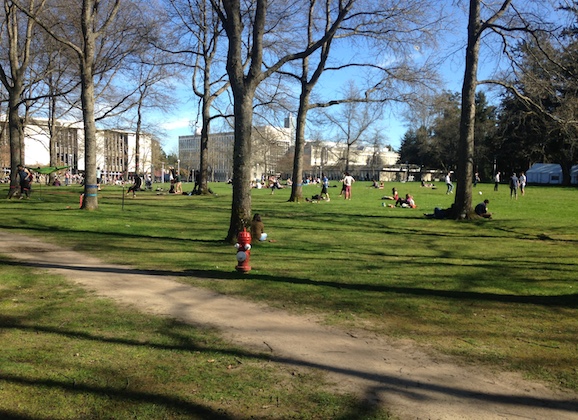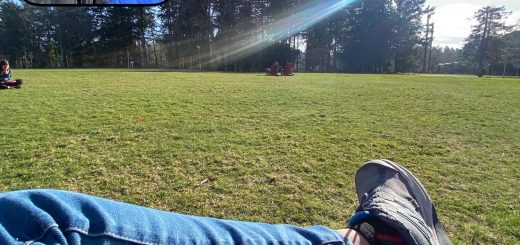Guide to the 2019 Canadian Federal Election: Candidate Information
 Before you delve too far into candidate information make sure you are already registered to vote! If you aren’t sure if you are registered or how to register you can find a lot of information and resources in my last post: Guide to the 2019 Canadian Federal Election: Register to Vote.
Before you delve too far into candidate information make sure you are already registered to vote! If you aren’t sure if you are registered or how to register you can find a lot of information and resources in my last post: Guide to the 2019 Canadian Federal Election: Register to Vote.
Now that you’re registered, you need to be informed about what candidates will be on the ballot and what your vote will mean in the election as a whole.
In Canada, our federal election allows people to vote for an MLA that will represent their electoral district in the House of Commons. This means that when you show up to the polls you shouldn’t expect to see the names of the leaders or the political parties (eg. Justin Trudeau or the Liberal Party of Canada). Instead, you’ll see your district’s representative of a party or an independent candidate. However, while your vote is for a single representative, generally the political party that has the most amount of members voted into the House of Commons will be the party whose leader will become the next Prime Minister.
 Each party or independent candidate has a platform that explains what their goals and intents are and it’s important to be educated about all the options out there. Each voter should conduct their own research on candidates in order to ensure your vote truly represents your views and values.
Each party or independent candidate has a platform that explains what their goals and intents are and it’s important to be educated about all the options out there. Each voter should conduct their own research on candidates in order to ensure your vote truly represents your views and values.
In order to get you started, I’ve compiled some basic information about four of the main parties running but remember that there is a lot of information out there about these parties as well as information about smaller parties and individuals that you may also want to know. This is simply meant to be a quick-start in order to get you generally informed and it is up to you to find out more about the candidates you are interested in.
Liberal Party of Canada
The current Prime Minister is Justin Trudeau who is the leader of the Liberal Party of Canada.
The Liberal Party is one of the larger political parties in this election and they have many representatives running across the country.
Many voters are already familiar with this party and their leader. They are considered centre/centre-left on the Canadian political spectrum. Some plans the Liberal Party have are stronger gun control, more support for seniors, and more accessible child care.
In this election, the Liberal party have some advantages and some disadvantages. Many voters are already familiar with the current party and with Trudeau and because of that many may opt to vote for what they already know.
In the same vein, voters have also witnessed the promises made by the Liberal Party during the 2015 election that were not followed through on such as: ending the first-past-the-post voting system, creating a new review system for pipeline projects that would take into account Indigenous voices, and implementing carbon taxes and other regulations to reduce greenhouse gas emissions.
It’s common for political parties to not accomplish all the goals they set out to accomplish but for some voters these broken promises will steer them away from voting for the Liberal Party again.
Conservative Party of Canada
Another large party running is the Conservative Party of Canada led by Andrew Scheer.
The Conservative party is considered centre/centre-right on the political spectrum.
Some plans the Conservative Party have are expanding Canada’s oil and gas sector, investing 1.5 billion to tackle wait times for MRI and CT scans, and reducing and restricting refugee and immigrant entry by prioritizing the immigration of skilled workers and reviewing the Safe-Third Country agreement.
The Conservative Party was in power from 2006 to 2015 (as a minority government from 2006-2011 and as a majority government from 2011-2015) with Stephen Harper leading as Prime Minister for those nine years. Over the almost-a-decade, Stephen Harper became widely disliked.
In a survey conducted in 2015, 62% of those surveyed disapproved of his leadership. This widespread feeling of disapproval may have been a factor in the victory of the Liberal Party in 2015. The Conservative Party’s new leader, Scheer, seems to be distancing himself away from his predecessor but still wants to prioritize many of the same conservative values.
New Democratic Party (NDP)
The New Democratic Party is usually the third or fourth largest party represented in the House of Commons and is currently led by Jagmeet Singh.
The NDP sits further left than the Liberals on the political spectrum. Some plans the NDP have are setting ambitious goals in climate protection (such as banning single-use plastics and cutting oil and gas subsidies), fully implementing UNDRIP and tackling the systemic oppression of Indigenous people, and reforming the voting system to a mixed member proportional representation system.
The NDP has never won the most seats in the House of Commons; their closest result was winning the second most amount of seats in the 2011 election which appointed them as the Official Opposition. The NDP is not as well known as the Liberals or the Conservatives across the country but is aiming much of their campaigning at the current largest group of voters (18-38 year olds).
Green Party of Canada
 Similarly, the Green Party of Canada also follows behind the Liberal and Conservative party alongside the NDP. However, over the decades, support for the party has gradually increased.
Similarly, the Green Party of Canada also follows behind the Liberal and Conservative party alongside the NDP. However, over the decades, support for the party has gradually increased.
Currently the leader of the Green Party is Elizabeth May and she has spoken in the past about not following the customary left-right dichotomy. She believes that no party fits cleanly on one point of the spectrum and the Green Party instead is associated with the ideology of “green politics” which is rooted in environmentalism, non-violence, and social justice.
Some plans the Green Party have are fully implementing the Truth and Reconciliation Commission and the Missing and Murdered Indigenous Women and Girls report, setting the ambitious goal of reducing 60% of carbon emissions by 2030, and removing discriminatory barriers to blood donation.
This introductory candidate information is by no means exhaustive. It’s important to do your own research when it comes to learning about each party and their representatives.
These four parties are not the only parties with representatives but they are the four parties with the most amount of representatives which simply means they are the four parties with the highest chance of winning the election. That being said, there are smaller parties and individual representatives in each electoral district that may share your views and who you may want to represent you in the House of Commons.
Voting in the first-past-the-post system can seem complicated and many people feel that their vote gets lost in the masses. But don’t lose hope! Read my next blog post to find out how your vote affects the overall results and what strategic voting means.
Author’s note: I would like to acknowledge that I will never be completely objective in my writing. My views and biases will bleed into my research and my work. That being said I have done my best to state facts. If information could be found through a party’s website directly it was used. Only in the case of missing information would it be sought elsewhere and if so I tried to use reputable news outlets. Take my writing with a grain of salt and be sure to conduct your own research when making your decision.








One quick fix. MLAs are members of the BC legislature (Members of the Legislative Assembly). When we elect representatives to the House of Commons in Ottawa they are MPs (Members of Parliament ).
The Green Party is also heavily committed to proportional representation.